By Nicholas Varangis
“We won because we smothered the enemy in an avalanche of production, the like of which he had never seen, nor dreamed possible.”
The above quote is attributed to William Knudsen, president of General Motors and Roosevelt’s wartime director of production management, a man who was intimately involved in the massive production drive that made the U.S. military the best supplied military in the world during World War II.
That is the argument made by This Is Capitalism, in conjunction with the WWII Museum in New Orleans, a website by Stephens, Inc. dedicated to reinforcing the appreciation of Capitalism in American society.
[text_ad]
This Is Capitalism has teamed up with the WWII Museum in New Orleans to produce two fascinating videos on the role of U.S. private industry in WWII. These short but informative videos discuss the ways in which two of America’s most influential entrepreneurs during World War II impacted the strategic course of the war.
William ‘Bill’ Knudsen’s story is detailed in the video Capitalism in World War II: The Arsenal of Democracy. President of General Motors Bill Knudsen’s chief contribution to the war effort was his role as Roosevelt’s wartime director of production management. The Arsenal of Democracy describes how the merger of political and economic leadership in the United States created the greatest war economy of World War II.
Capitalism in WWII: Andrew Higgins “The Man Who Won WWII” covers Andrew Higgins, whose landing craft designs, based on his own experiences building shallow-water boats in New Orleans, dramatically shaped the way the U.S. military fought World War II. With its enemies oceans away, the U.S. military relied on these small, purpose-built crafts to put boots on the ground.
The videos also discuss the role of capitalism in the integration and desegregation of the workforce. With demand for labor rising, capitalists were incentivized by market forces to integrate the workforce with static labor pools, namely women and African Americans who had previously been excluded from certain sectors of employment by discriminatory practices. Integration in the war economy would change America’s peacetime economy for good and would lead to broader societal integration in the postwar era.
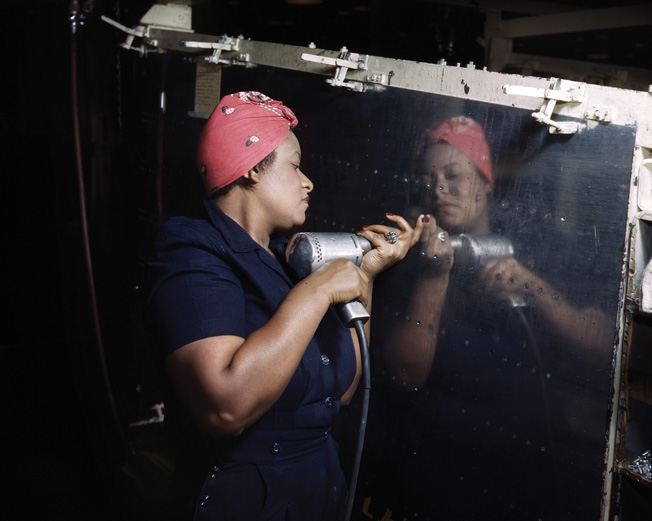
Both videos are great primers on the industrialization of America’s military might in World War II, and are great as an introduction to the subject for both war buffs familiar with the military side of the war and for educators as a classroom tool.
An Interview With Rob Citino, National WWII Museum Expert
To gain a better understanding of the role that capitalism specifically had on the outcome of the Allied war effort, we sat down with National WWII Museum expert Rob Citino for a comprehensive comparative discussion of economic policies.
Rob Citino, Phd is an award-winning historian and scholar who has published ten books on military history. His principal academic focus has been on the Wehrmacht. Dr. Citino is one of the experts featured in the This Is Capitalism videos.
Our discussion with Dr. Citino ranges from the interplay of government and private industry in the U.S. war economy of World War II to the economic challenges, successes, and failures of four key belligerents of World War II to the rise of the United States as an economic superpower in the postwar era.
Warfare History Network:
The This is Capitalism videos hone in on Bill Knudsen of GM and Andrew Higgins who invented the Higgins boat. These were individuals whose contributions not only made US industry more productive, but also dramatically changed how we fought war, on a strategic and even tactical level. What other capitalists and industrialists shaped the US war effort in such a way?
Rob Citino:
Well first of all, what America was able to do as a result of individuals like Bill Knudsen and Andrew Higgins, and also as a result of our social economic system and as a result of our fantastic material wealth (much of which was lying fallow during the depression) was to mass produce and employ an economy of scale on a way that was just unheard of to the other countries, with the possible exception of the Soviet Union. We’ll have to nuance that when we get to the Soviet Union.
If you look at others, another name that has to be mentioned up top is Henry Kaiser. He was the master builder of the war. Kaiser was an energetic and hard driving guy, he was always going in all directions at once. So he started a road construction business, a lot of innovation was there in the 20s and 30s. Earth movers and Mac trucks, caterpillar tractors, even the use of hard hats on building sites. Kaiser would help build the Hoover Dam and the Grand Coulee Dam.
Kaiser went from construction to shipbuilding, having never built a ship before in his life, during World War II in Richmond, California and Portland, Oregon. They were Liberty Ships, a kind of a floating train car, the most ungainly think you could ever imagine, and he banged them out with abandon.
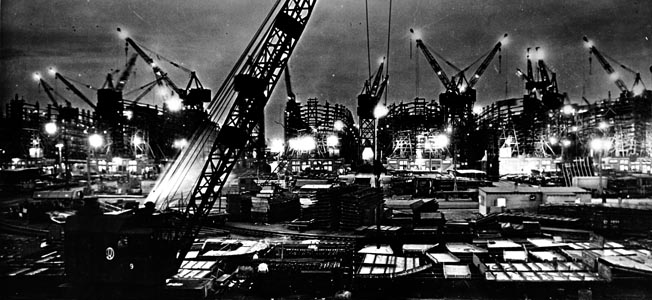
It used to take months to build a ship. Kaiser’s company could bang them out in 10 days. A ship is a funny thing to build because for most construction projects you speed up at the end. You’ve done all of the heavy lifting in the beginning and at the end it really goes quickly. Shipbuilding goes slowly at the end because you have to put the deckhouses on, but you can clamp together the hull fairly quickly. Kaiser was the one who hit on the notion that you can prefab these things, preassemble the deckhouses and then use a crane to put them on top of an already full constructed ship. I think that was a real breakthrough in shipbuilding. Some Liberty Ships experienced cracking in the course of the war, which almost certainly had to do with them being built as quickly as they were, but that’s mass production. You might have a certain amount of wastage in mass production because you’re going so rapidly, but at the same time, the end result is still far more ships than anyone else was able to put on the water.
Now the next point you referenced was a good one, because what are numbers? They mean nothing. I’m a historian of the German army in World War II, that’s what I’ve written all my books. And the Germans had some of the greatest achievements really against numerically superior forces, early on in the war especially, so I don’t think numbers are as important.
It’s what those numbers allowed Americans to do in the course of WWII. You said it affected strategy and even tactics. If we were going to come to grips with our enemy in the Pacific, Japan, an island nation all the way across the Pacific, or in Europe, Germany, we had to get across the Atlantic to get there. We had to form and deploy gigantic forces in a short amount of time, and the only way to get them there is by sea. You can air transport light forces into a theater, like paratroopers and light vehicles perhaps, but in order to bring the heavy metal (the way the United States fights wars is with a lot of materiel, a lot of ammunition, and a lot of heavy artillery) if you’re going to get these things to theater, the only way you can do it is by sea. And so someone like Kaiser, building these Liberty Ships literally enabled the U.S. Army, and other forces, the Air Force would have to be included as well, to fight a two ocean war simultaneously.
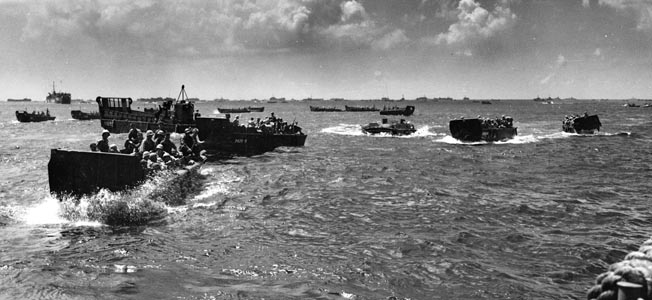
The real peak of that achievement is June 1944: spearheading an alliance, the United States landed a massive force in Europe, tens of thousands on the first day and millions of follow-on forces, and literally within weeks launched a gigantic landing on the island of Saipan in the Marianas. There has never been a military power before, and maybe there never will be again, with that kind of global reach. And it’s things like being able to build a Liberty Ship faster than the Germans could torpedo them in 1942 that enabled this. It’s nothing romantic, it’s a battle of attrition. You have to produce more than you’re losing. And, by and large, that is the margin of victory across all fronts for the Americans in World War II. So it is someone like Knudsen, an expert on production and the assembly line, someone like Higgins, building a little shallow draft boat for river traffic down here in the New Orleans swamps and bayous, someone like Kaiser, figuring out a way to build a big transport ship in an ungodly short amount of time, that allows America to fight the war of the rich man. The Germans always talk about their own war effort of the Wehrmacht as the war of the poor man, or the poor man’s war, and they always looked with envy at America’s material wealth. But they never would’ve seen it if we weren’t able to deploy in Europe with the vast merchant marine and naval armada we were able to build.
WHN:
What specific challenges did industrialists face as they converted from a commercial market to a war footing?
RC:
The biggest one I think is machine tools. You don’t produce anything if you don’t have the correct machine tools. These are the point of a spear of a drill press, or the typical way that you’re setting up a lathe or a punch press. And building machine tools had to be first. Obviously, what goes into making a refrigerator for civilian use is a different animal than boring out a 16 inch battleship gun. And so you had to create these machine tools first. That was the biggest challenge. Machine tools are high precision and there are only a few firms in America that make them.
The first thing that had to be done though was to contact machine tool producers and give them new specs, give them loans plus contracts to enable them to produce machine tools. That’s the biggest one.
The second one I think is exploiting American economies of scale by building larger factories than had ever been built. And that’s not romantic, thinking of the Willow Plant of Michigan for example. It was built very quickly, and in many ways not everything worked, not everything fit together. There was a pretty bad record of safety and accidents while on the job, and it was kind of like the whole thing was gonna break down all together. It also required Americans to be willing to move from wherever they happened to live and go where there was work. And I know again you could play inspiring music behind the soundtrack of that, but what I mean was that people were forced to uproot their lives if they wanted to keep working in a wartime economy. And those big firms which got bigger and bigger and bigger replaced a lot of small firms which went under all through 1940 and 1941. So I think the first thing is machine tools and the second thing is rationalization: larger and larger corporations supplanting smaller, single-room machine shops across America.
Once production goes into play, then the big third one, which is the one we’ve already discussed to a certain extent, is getting that stuff from America to the Theaters and the front. That was a big challenge, and that was still being played up in ‘42 and ‘43. When we went to war in late ‘41, the first thought of General George Marshall, who was the Chief of Staff of the Army, was to invade Europe: beat the Wehrmacht, beat the Germans in France, push back into Germany, and march into Berlin and capture Hitler. But he soon realized that we couldn’t. We didn’t have the transport capability. Even if we did have the transport capability, we didn’t have the landing craft that could actually land on a hostile shore and get troops into action quickly. This is, of course, the famous Higgins boat: Landing Craft Personnel (LCP), and the Landing Craft Tank (LCT). There are all sorts of varieties of it. That ship had barely been designed, and it certainly wasn’t in the kind of mass production that it was going to take.
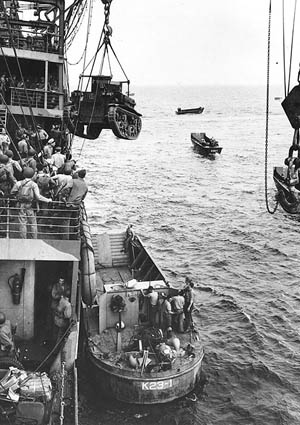
Napoleon famously said that an army marches on its stomach. That is to say: you can only do what you are supplied to do. It doesn’t matter how good your generals are or how good your soldiers are, if they aren’t being fed or if they don’t have any ammunition, then they’re not going anywhere. The absolute upper limit of U.S. operational mobility of World War II was the Higgins boat: we could only do what the amount of landing boats would allow us to do. Thankfully, we wound up producing so many of them that there was no real practical upper limit, only a theoretical upper limit. That’s where that production story becomes so important in terms of strategic and operational challenges.
WHN:
One of the theories on how the American postwar economy boomed attributes the success of the American economy to monumental government spending. Is this a misconception and, if so, what can we attribute to the success of the postwar American economy?
RC:
There’s a famous book, Arthur Herman’s Freedom’s Forge, which attributes the entire success of the World War II economy onto a handful of these Knudsens and Higgins’ and Kaisers that you and I have been talking about. They brought their patriotism forward, the innovation, the entrepreneurial skills that U.S. workers on all levels enabled. I don’t deny any of that, but the portrait has been overdrawn. Cost-plus contract gave every World War II contractor a guaranteed 8 percent profit, more or less. A guaranteed 8 percent profit is a lot of money for a $10 billion industry. Things like Cost-plus contract, a five-year amortization rather than 16, and letters of intent that could be used for borrowing [also impacted the success of the World War II economy]. Henry Stimson who was Secretary of War at the time said “you have to let business make money, otherwise business won’t work.” It’s quoted all the time. What’s not quoted all the time is the preface to that quote: “Under capitalism, you have to let business make money.” I think you had a lot of intrepid entrepreneurs in World War II, and you also had a lot of government spending. It’s neither a pure form of free enterprise nor some kind of top-down government socialism, I think it’s somewhere in the middle.
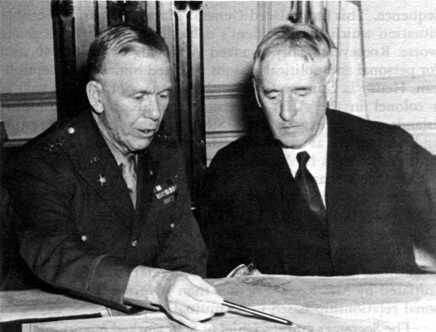
I think in the ‘50s, a couple of things work together for the U.S. economic growth. One of them is that all of our competitors had pretty much been laid low. If there was ever a rivalry with the British Empire, that rivalry died in early ‘41 when Britain ran out of money to buy our products and went to Lend Lease. But Lend Lease did not come into place until Great Britain ran out of money. Likewise, Western Europe had been devastated, the Soviet Union had its own problems, there was no real major peer competitor on an international market.
If you add one more thing in there, stable and incredibly cheap cost of energy between 1950 and 1973, I think you’re going pretty far forward in explaining America’s incredible level of economic boom and incredible level of prosperity. I was born in 1958, and one thing I remembered most of my lifetime up to my teen years was that gas cost 30 cents a gallon. One year you’re making $5,000 a year and the next year you’re making $20,000 a year, but gasoline still costs 30 cents a gallon. It did until the oil shock of 1973; the Arab-Israeli War, the oil embargo declared by OPEC. I think often we may be look for ‘Why are we no longer as successful as we used to be? Is there a spiritual malaise in the country?’ Well, I’m not sure anything is wrong with it. Oil prices fluctuate wildly and that leads to a great deal of economic uncertainty. Energy is the lifeblood of the modern economy. I think cheap energy was really fuelling the prosperity of the ‘50s and ‘60s.
WHN:
What commonalities were there between the British war economy and the American war economy?
RC:
There were commonalities, in that Britain was wedded to a capitalist system, free enterprise, banks that were regulated but hardly directed by the state. I think you had all of these things in abundance in the United States as well. But rather than emphasize commonalities, let’s look at some key differences.
Britain was in that war a long time before we came into it. Two years plus. Early in 1941 Lend Lease began, but it did not go into place until Britain was pretty much tapped out, and Britain would remain tapped out for the rest of the war. And what that meant was that Great Britain always had to fight with one eye on how much reserve manpower it had remaining.
By the time British forces landed in Normandy, we always say of Montgomery that he was so slow and never seemed to move as rapidly as he ought. By that time, he was down to Britain’s last field army, and if they lost that one, there probably wasn’t going to be another one set up on the front. So it resulted in a great deal of caution. So Britain mobilized and they came up with great designs and mass-produced them as far as Britain was capable. But of course the British economy was nowhere near the size of the American economy. By 1943, U.S. military production was twice that of Germany and Japan combined. Victory in 1945 was inconceivable without Britain, and we have to emphasize that Britain fought World War II and helped lay Hitler low at the cost of surrendering its world empire and in many ways surrendering its global status.
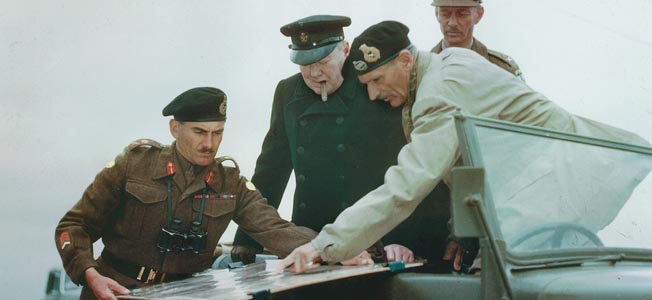
In the Soviet Union, you have economies of scale, gigantic industrial facilities, and mass production. However, I think there are a couple qualifiers: the Soviet Union lost so much of its productive farmland and so much of its industrial territory and raw materials in the initial Barbarossa offensive. Imagine if in World War II an enemy had overrun the American Eastern Seaboard all the way up to Pittsburgh and how America might have retooled and how America might have gone back to mass production after that. It would have been very difficult.
The Soviets compensated by tossing manpower and womanpower as much as possible at industrial problems. There were virtually no safety regulations in Soviet plants at all: high catwalks over molten metal without any guardrails on either side. They mass-produced weapons that were rough and ready, easy to mass-produce, maintain, and replace once they had been destroyed. Why spend a lot of time on it? The Soviets realized that when a tank went into combat it probably had the average lifespan of two or three days against the Germans. So how many bells and whistles do you really want to load onto that thing? And by and large there were no bells and whistles. They were designs that they liked and that they knew were good and they rolled them into victory, especially the T-34 tank, the best tank in the world in 1941. In its various upgrades it managed to remain competitive until the very end of the war. I think that’s the Soviet story.
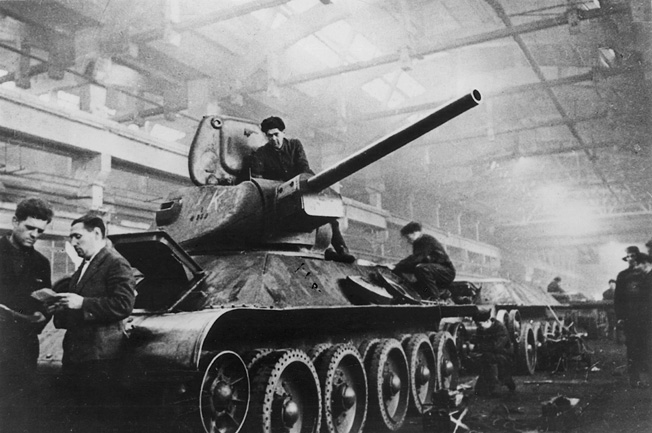
Fascist powers were wedded to a kind of smash-and-grab economics. They would conquer a territory, enslave much of its inhabitants, take all of the raw materials, ship them back to Germany or use them on site. Both [the Japanese and German] economies worked on slave labor. If World War II had any beneficial impacts at all, it’s that it proved to the world that you cannot run a modern economy on slave labor. You have to have workers who are, if not eager, at least accepting of being at their post. Even the simplest machine requires some skill to use. The worker has to have some education, has to be fairly well fed, fairly well treated, perhaps the possibility of a promotion. I worked drill presses for three summers earlier in my life, and I did enough factory work to know that it is really tough stuff. Ill-fed slave labor chained to their drill presses aren’t going to get it done. I think that’s the story of the Fascist powers.
On the German side, they had wonderful designs. The Germans were magnificent engineers and they had always had that precision engineer reputation. In World War II I think they would have been better off sticking to a few basic designs and then mass-producing them as much as they could. They were always after the next prototype. In the course of the war, the Germans started with the Panzer I and II. The Panzer I had a couple of machine guns on it, not even a main gun. They built the Panzer III, the Panzer IV, the Panzer V (a good tank, the Panther), and then the Panzer VI (the famous behemoth, the Tiger). Six major designs. Throw in some other designs, the captured Czech tank that they got early before the war when they seized Czechoslovakia, the Panzer 38(t). And there are various others. By and large, the American Army fought the war with the Sherman. So while the Germans were going through those five or six major designs, the U.S. Army relied pretty much on the same tank, the M4 Sherman. It was lighter than the German tanks by the end of the war, but it could be mass-produced, it could be shipped to Europe (heavier tanks probably couldn’t have been in great quantities), and it had its own technology (the geo-synchronized turret that allowed the gun to be trained on the target even if the tank was moving). So when you throw all that stuff together, I think each of the powers had its own challenges.
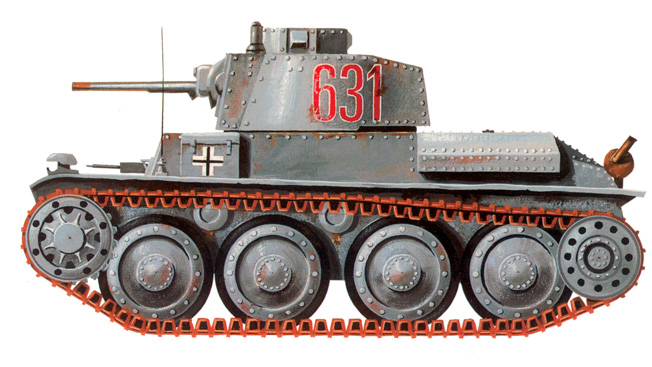
My sense is that even if the Germans ran their war better, ran their economy better, didn’t try to enslave all the people they conquered, they would still have a hard time winning World War II. They were fighting a global war against powers with vastly superior resources, especially after 1941, with the Soviets in the east and where Hitler has declared war on the United States. At that point I think anything short of inventing a ray gun of some sort, or inventing nuclear weapons on their own, it’s pretty hard for me to imagine a German victory in World War II.
WHN:
What do you think about Albert Speer’s so-called ‘armament miracle’?
RC:
Speer did a lot of things that any smart organizational head would do. He rationalized (in the economic sense in which smaller firms are absorbed by larger firms), he stopped the constant production of prototypes, and he gave favored contracts to larger firms. Those are all interesting and those are all worthy. At the same time we have to be honest: something Speer also did was greatly increase the use of slave labor. That was one of the reasons why he was put on the docket at Nuremberg. It wasn’t because he was just generally not a nice guy, but the economy was wedded to slave labor as virtually all of German manpower was becoming increasingly older and increasingly younger and increasingly being sent to the Front. Those factories are not going to run without slave labor in gigantic underground facilities. So if you want a picture of the German economy and the armament miracle of ‘43-’44, think of a subterranean factory at Mittelbau, the Dora factory: tens of thousands of slave laborers, like emaciated skeletons, practically chained to their drill presses banging out parts for one obsolete Me. 109 after the other. That’s the picture at the end of the war. I have nothing good to say about Albert Speer. There was rationalization and he did do a lot of sensible things economically, but once you are wedded to a regime that immoral it’s really hard to stay clean.
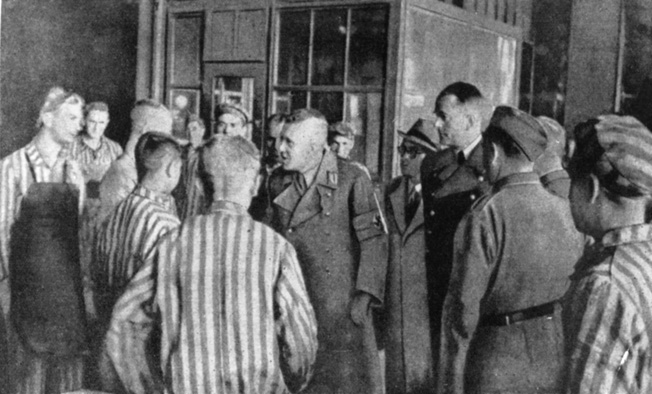
WHN:
What were the lasting impacts of the U.S. war economy on the U.S. economy?
RC:
I think by and large the rationalization of the U.S. economy in 1940 led to the postwar economy of fewer and fewer small firms, fewer and fewer mom and pop stores, fewer and fewer family farms. It didn’t look obvious in the 1950s, but it looks pretty obvious today. We rationalized and realized there were extremely efficient ways to grow our food, make our clothing, and market goods and services. The end result is still a standard of living that is the envy of the world. Having rationalized family farms, more and more people seem to be doing what they wish to do in America, and when they have the chance to leave the farms and do other things with their lives, leave small towns and head to the cities, they do so. I think in some sense the rationalization of the economy gave birth to massive levels of urbanization and internal migration. Once people had begun working for themselves, women and African-Americans who were able to get some decent jobs in World War II, they were hardly willing to go back to sharecropping (in the case of African-Americans) if they could help it. Many of them didn’t, and so you had a vast internal migration that in many ways the creation of Modern America.
***
You can find these collaborative videos by This Is Capitalism below:
Capitalism in World War II: The Arsenal of Democracy
Capitalism in WWII: Andrew Higgins “The Man Who Won WWII”
Visit This is Capitalism for more videos on American capitalism.
Check out the National WWII Museum in New Orleans site to find resources on World War II history or to plan a visit.
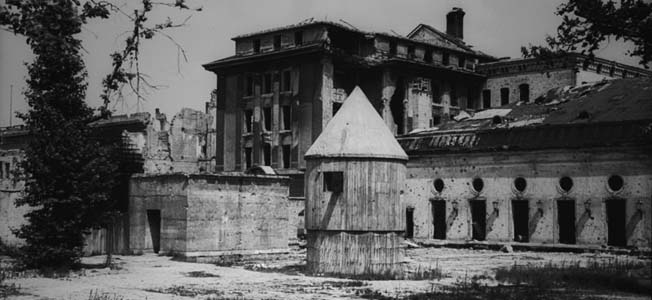
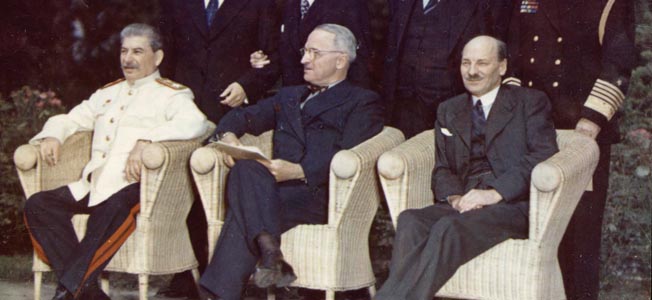
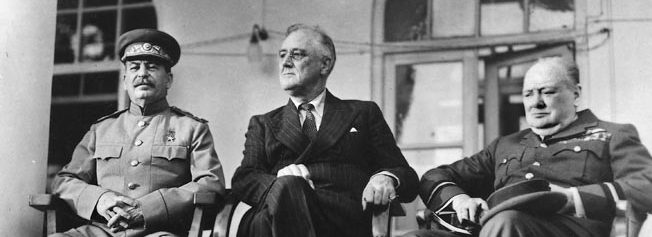
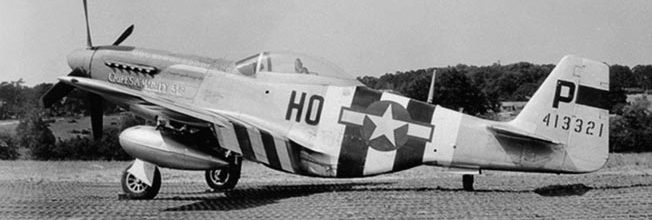

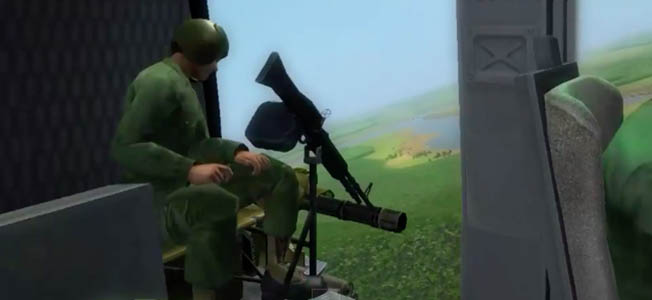
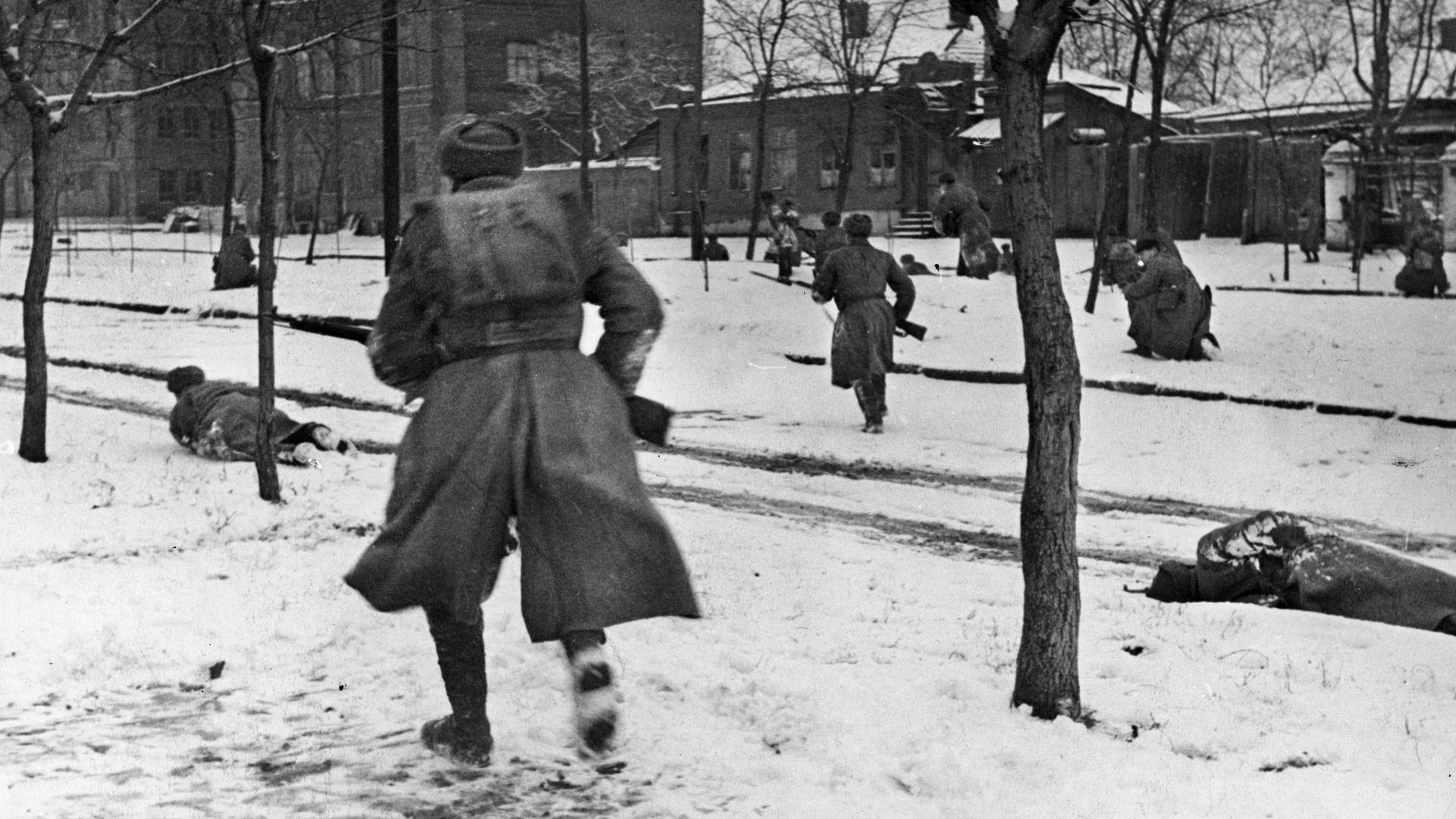
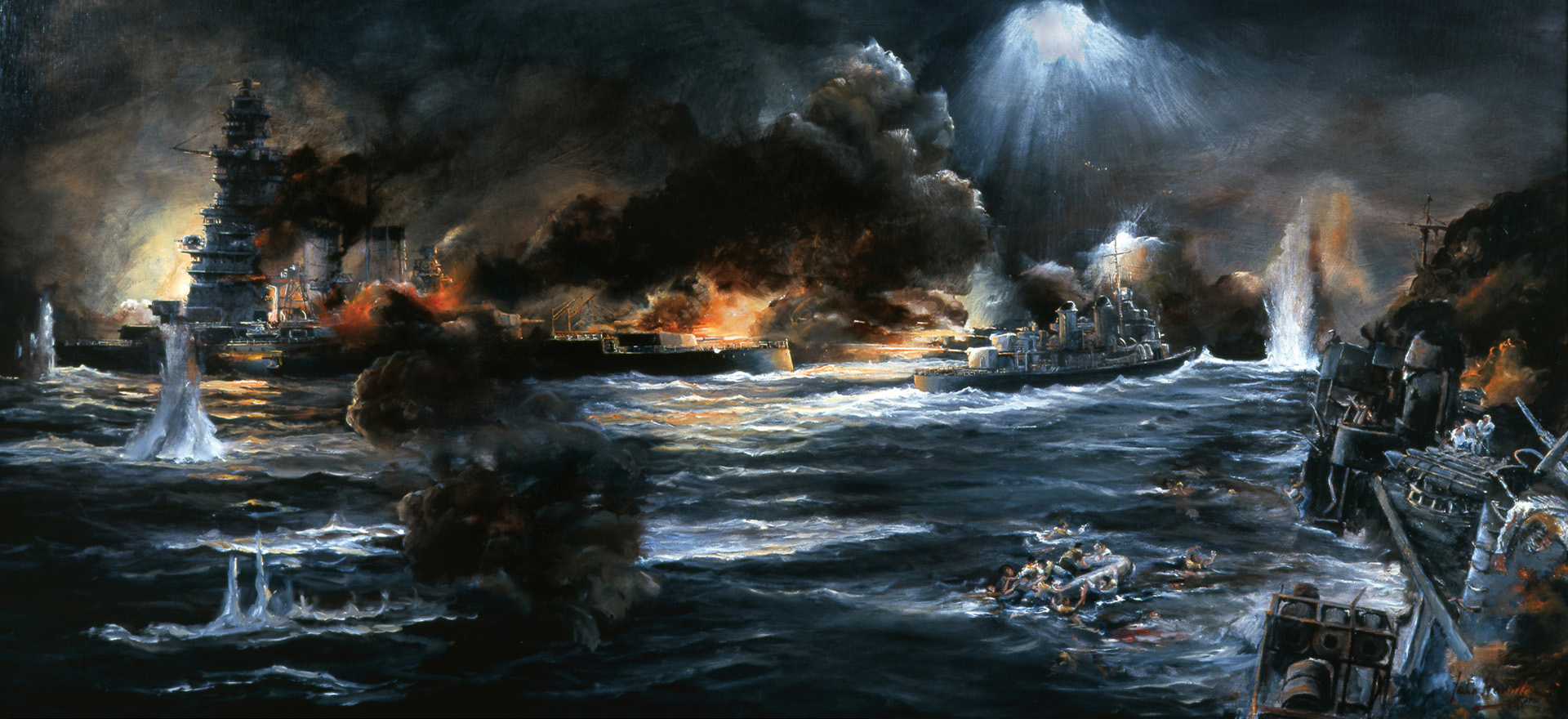
Join The Conversation
Comments
View All Comments